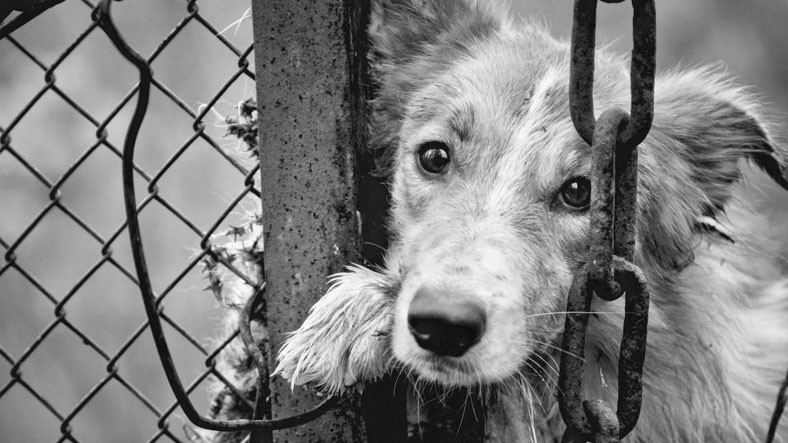In the world and Turkey violence against animals We can encounter the events of the day, we go into a deep sadness with the images we encounter. We cannot understand why people injure or kill animals in cold blood.
But science is trying to find an explanation for this homicidal behavior, as with any other subject. Dozens of scientific studies conducted to date have shown that all forms of violence against animals could be a sign of a serious mental illness revealed.
What does science say about people who abuse animals?

Violence against animals has long been accepted in the scientific community as manifestations of a dangerous psychopathy that is not limited to animal abuse. Studies so far have produced frightening results. Without further ado, let’s get to the results.
- A study conducted by Northeastern University and Massachusetts SPCA found that people who abuse animals five times more likely to commit violent crimes against people thought it was. These people too
- 4 times more likely to commit property crimes,
- found to be 3 times more likely to be involved in drunken and disorderly crimes.
- He pointed out that about a third of killers who kill for sexual gratification abuse animals during childhood and/or adolescence.
- “Twenty-eight of the 36 sexually motivated killers were assessed for certain child characteristics, including animal cruelty. Of those, 36% had abused animals as a child, 46% had abused animals as a teenager, and 36% had been cruel to animals in adulthood.”
- It has been suggested that zoosadistic actions may be associated with puberty and demonstrate masculinity problems in male adolescents.
- The FBI has announced that cruelty to animals is one of the features regularly found in rape and serial killer files.
- However, Robert K. Ressler, who created serial killer profiles for the FBI, stated that the killers usually tread this path by killing and torturing animals such as children.
- Many studies have shown that sexual interest in animals is one of the most important “warning signals” and risk factors for sexual delinquency.
The study, which analyzed 32 studies, found similar results:

By reviewing 32 studies published between 1995 and July 2017, the scientists showed that incidents of animal abuse during childhood and adolescence generally occur alongside other forms of violent and antisocial behavior.
- Animal abuse; bullying was associated with behavioral problems, experiences of abuse (emotional, physical and sexual) and child delinquency.
- In addition, repeated animal abuse during childhood and adolescence was an important indicator of future adult interpersonal violence practices.
Findings that support scientific results in real criminals:
- The one who raped, stabbed and mutilated a 7-year-old boy Earl Kenneth Shriner was known in his neighborhood as the man who shot fireworks into the rectums of dogs and hanging cats.
- Brenda Spencer, who opened fire at a San Diego school, killing two children and wounding nine, had repeatedly assaulted cats and dogs, often by setting their tails on fire.
- In his youth killed 13 womenAlbert DeSalvo, the “Boston Killer” who traps dogs and cats in fruit crates and shoots arrows through boxes.
- Carroll Edward Cole, who was executed for five of the 35 murders he was charged with, was the first to witness his first act of violence as a child. choke a puppy said that.
- In 1987, three Missouri high school students were charged with beating and killing a classmate. They had a history of repeated mutilations that started a few years ago. someone, that he killed so many cats he forgot how many known person. The two brothers who killed their parents had previously told their classmates that they had beheaded a cat.
- Serial killer Jeffrey Dahmer stuck dog heads, frogs and cats into sticks.
- More recently, high school killers like Kip Kinkel, 15, of Springfield, Oregon, and Luke Woodham, 16, of Pearl, Miss., tortured animals before using firearms.
- Columbine High students Eric Harris and Dylan Klebold, who shot and killed 12 classmates before turning their guns on themselves, bragged to their friends for destroying animals.
With the “Animal Protection Law” of July 9, 2021, prison sentences were provided for those who violate animals:
“Anyone who cruelly and cruelly tortures or treats a domestic animal or domestic animal shall be sentenced to 6 months to 3 years in prison.”
1952 Nobel Peace Prize winner Dr. Let us remind you of the words of Albert Schweitzer:
“Anyone who has become accustomed to seeing the life of a living being as worthless is also in danger of coming to terms with the idea of ’worthless human life’.”
SOURCES
The psychology of animal torture
The relationship between childhood and adolescent animal abuse and interpersonal violence: a systematic review
Human abuse linked to cruelty to animals
FBI – Animal Cruelty Detection
FBI – The Link Between Animal Cruelty and Human Violence
Animal cruelty and developmental psychopathology
Pets and Violence – MSPCA
Animal Abuse – Wildlife Rescue & Rehabilitation
Technology product recommendations at a discount on Amazon










:quality(85)//cloudfront-us-east-1.images.arcpublishing.com/infobae/JCQ4MYDDD7FEZBHPODRVWDJJGQ.jpg)




